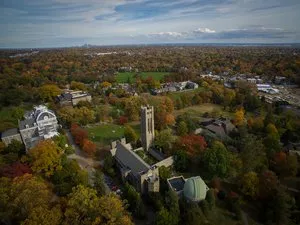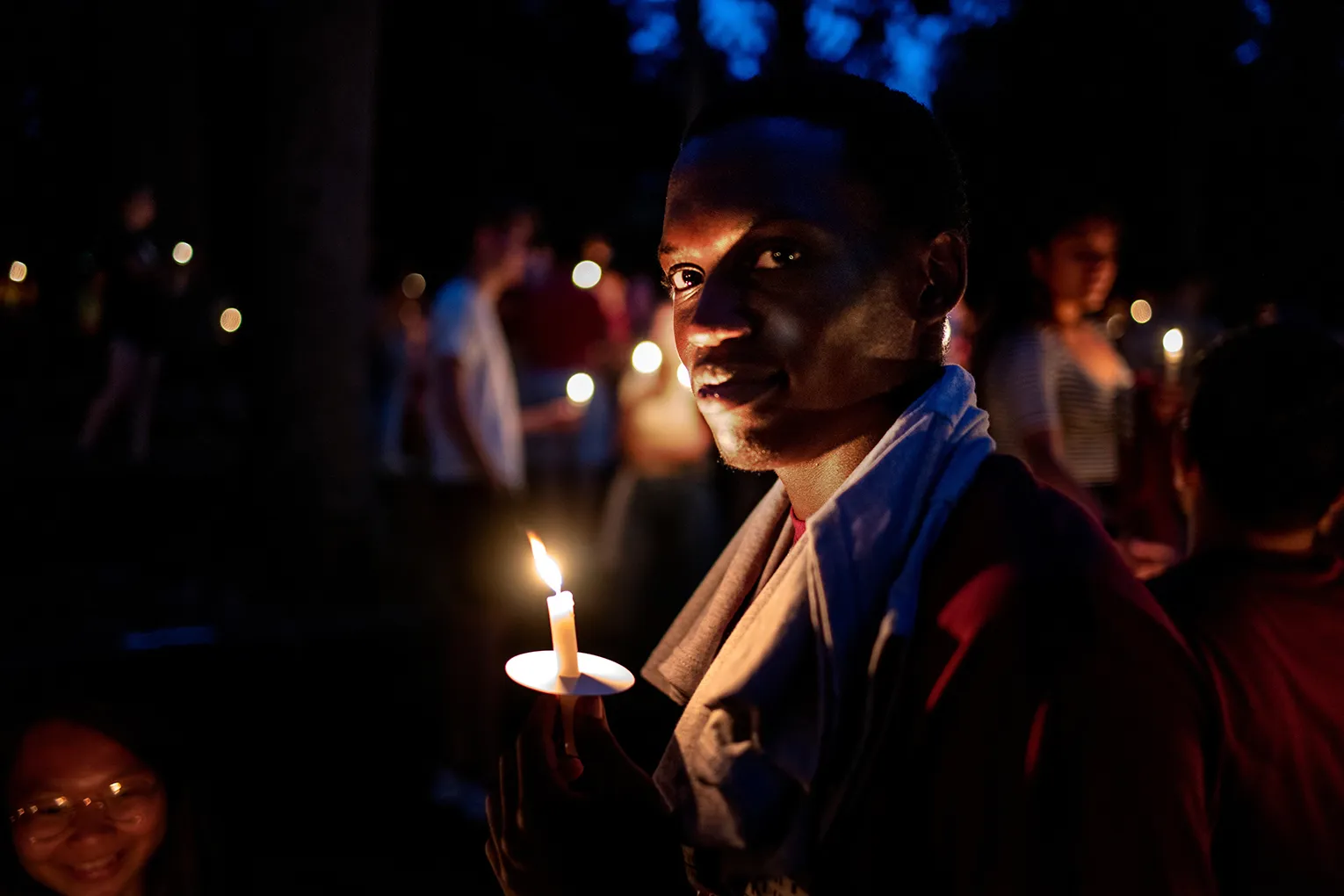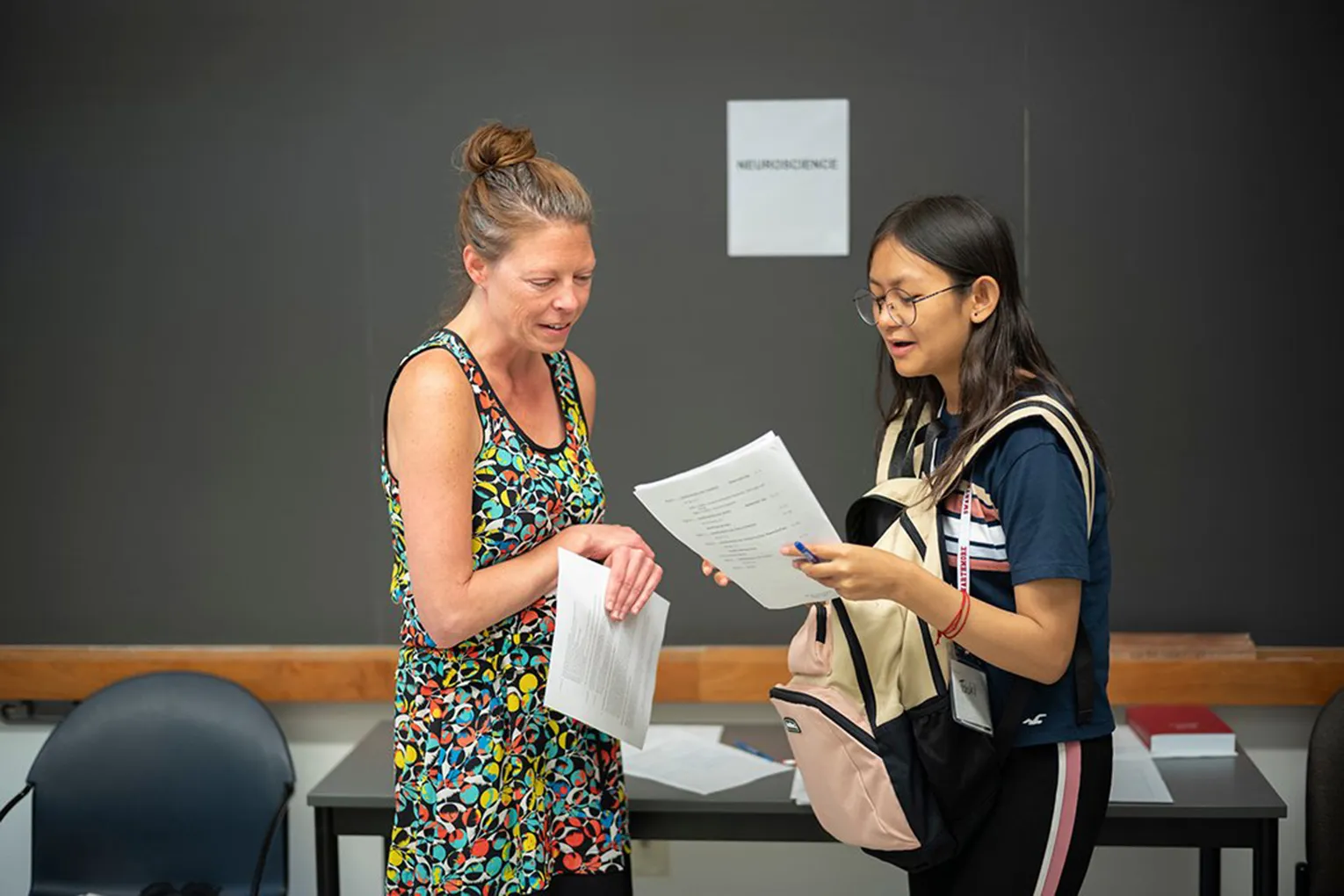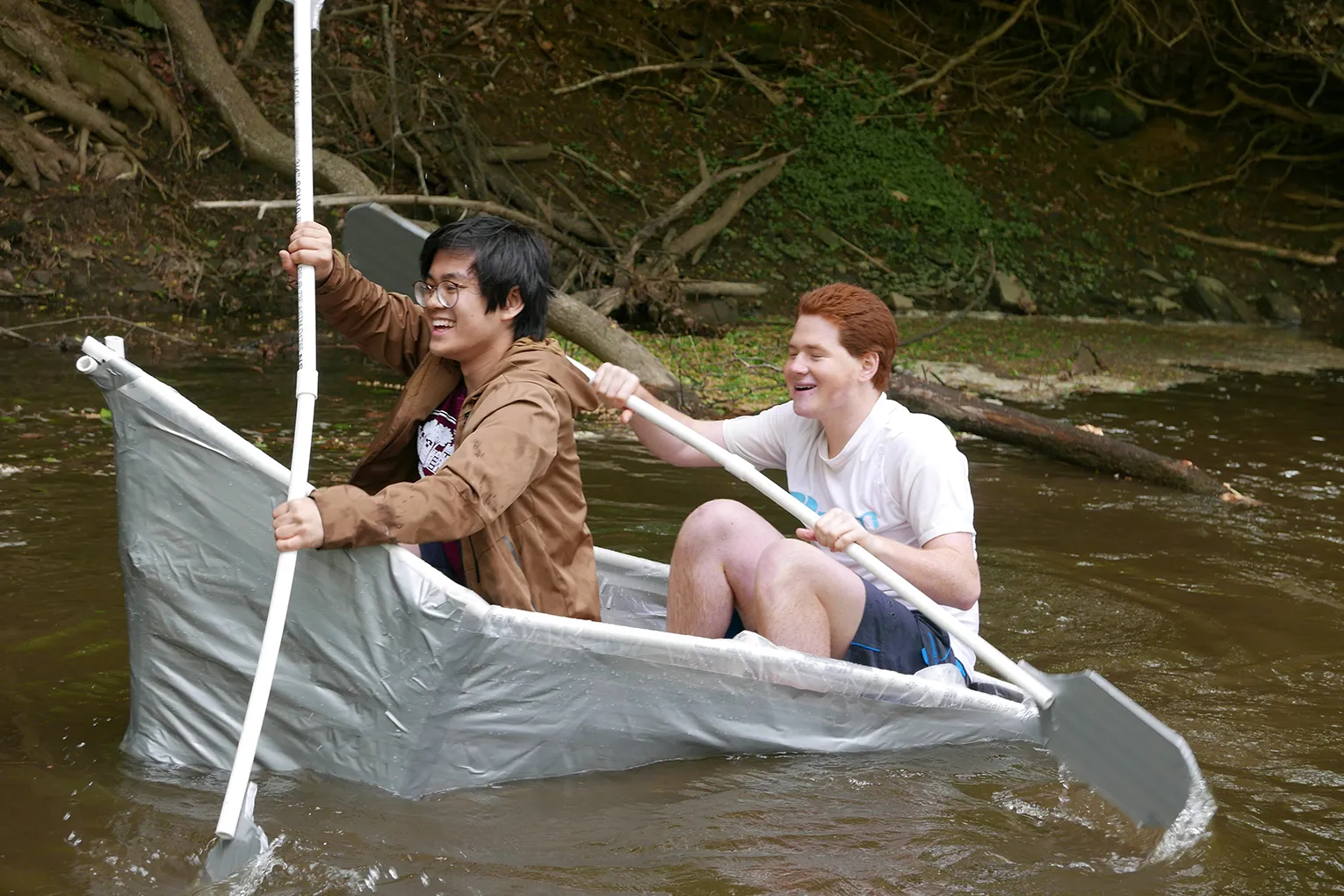Rethinking Black Art: Brandon Archer ’25 Chosen for Exclusive Arts Writing Incubator

Brandon Archer ’25 was recently one of only six people accepted to The Black Embodiments Studio [BES]’s Arts Writing Incubator, a prestigious and exclusive program run by Kemi Adeyemi, associate professor of gender, women and sexuality studies at the University of Washington.
“[BES is] a multipronged approach to really curate a love, a sustained and intentional relationship with Black contemporary art,” says Archer, who has designed his own special major in visual cultures and literatures of the African diaspora. “I don't think there's been a single moment where I haven't learned something about myself, who I am, my relationship to others, if it wasn't through artistic and cultural expressions of Blackness.”
“There are few institutional spaces that cultivate arts writing and criticism as a skill, and only a handful that focus on the histories and practices of Black aesthetics,” says Assistant Professor of Black Studies Jamal Batts, who introduced Archer to the opportunity. “I am elated that Brandon was chosen for BES’s Arts Writing Incubator, where he will have access to workshops and training from a number of today’s most stellar culture workers.
“Some of his cohort members are working art curators with graduate degrees,” adds Batts. “To receive this opportunity as an undergraduate speaks to Brandon’s immense gifts and bright future in the arts and humanities.”
The fellowship, which started in October and ends in June, explores questions like “How can we reimagine the way that people are writing and conceptualizing and theorizing about Black arts right now, to be more empathetic, to be more ethical, to be more socially involved?,” says Archer. Currently, the fellows meet virtually, for two hours at a time, every month. In May, BES will fly him to Seattle for the in-person part of the program.
“We're supposed to be going to museums, we're going to shows, bringing in Black aesthetic experiences, Black artistic production to be in conversation with during the actual meetings,” says Archer. “Then there are workshops, lectures, and thought experiments that are making us work on our arts writing.”
The fellowship culminates in the publication of a new issue of A Year in Black Art, the Black Embodiments Studio’s academic journal. Each cohort member will have a piece in the publication, which they have been working on throughout the fellowship.
“It's such a critical intervention into the arts space, because the arts world is privy to all of those same racial hierarchies and racial economies that make engagement so difficult,” says Archer.
Archer, a Mellon Mays Undergraduate Fellow, is heavily involved in the Swarthmore community and the broader Philadelphia community. On campus, he is part of the Swarthmore African-American Student Society [SASS], the Black Alumni Network, Resident Assistants, Writing Associates, and previously, the McCabe Board.
In 2020, Archer joined the Philadelphia nonprofit UrbEd, Inc. as communications director. A few months later, the executive director stepped down, and Archer was hired to continue the organization's work. He served as executive director for three years while a full-time student at the College. UrbEd organizes for racial justice in Philadelphia schools. During Archer’s tenure as executive director, the organization was involved with litigation with the ACLU, opened a youth space in Center City at 1521 Locust Street, and ran campaigns against gun violence.
The issue of anti-Black violence is where his background in organizing and his interest in art most overlap.
“In recontextualizing or making sense of our relationship to trans-Atlantic violence [as Black people], images become the most important thing,” says Archer. “What is at stake when representing the body in the ‘Trayvon generation’? This generation that's been defined by police brutality.”
His arts writing examines the work of painter Amy Sherald and sculptor Nick Cave, alongside several other Black artists.
“I'm looking at artists that are diverging from historical images of Black embodiment," says Archer. "Maybe they are rethinking and getting rid of skin tone, as Amy Sherald is doing. Maybe they're rethinking the entire human form and surrendering liberal humanism, as Nick Cave is. But it’s this world of possibility, for Black people specifically to make sense of, to revisit, to move from and move alongside generations of suffering.”
Archer adds: “These artists are imagining something different and something beautiful. Something that sees the violence, something that isn't trying to forget it or ignore it, but to find beauty. Not within it, but while still holding it. And that's the work I'm trying to do in Philly. That's the work I've always been trying to do on campus here with SASS, with any of the clubs I'm in.
“It's the work of reimagining alternate possibilities, reimagining what is possible for yourself, reimagining what is possible for communities, and what is the theory and the ideas that make that possible,” Archer says.



